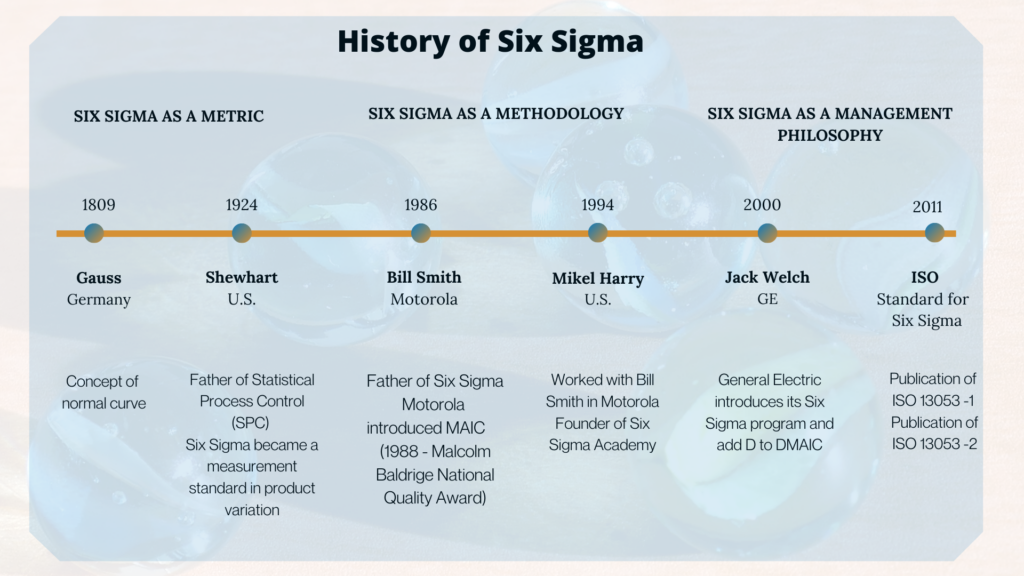
The Sigma measure of performance from the SPC, along with the PDCA from Shewhart, evolved to become the MAIC Six Sigma methodology with Bill Smith (Father of Six Sigma) at Motorola. Mikel Harry worked along with Bill Smith and founded the Six Sigma Academy. Both are known as architects and pioneers of Six Sigma.
Later, GE added the D to the MAIC, and under the Jack Welch leadership, consolidated the DMAIC as the Six Sigma structured methodology for process improvement. The PDCA is still used, but mostly as a problem-solving methodology or as a framework for quality management systems standards. Talking about QMS standards, there is already a standard (ISO 13053) that specifically provides guidelines to structure Six Sigma management systems.
Although issue resolution and problem-solving are necessary to contain and resolve problems, they are not the focus of Six Sigma projects. The first acts on the effects of the problems, and the latter, on the special causes of variation, which does not help to understand and predict the behavior of the process in the long run. There are two “must” criteria to be considered a Six Sigma project: not a solution or an upgrade, and unknown root cause. These criteria disqualify Problem Solving and Issue resolution as Six Sigma projects.
Six Sigma has evolved further though, to become a management philosophy, that allows a better decision-making process, by describing, comparing, and relating to the common causes of variation, to ultimately model and predict the behavior of the process in the future. This means that not only the processes are set to deliver products at the six sigma level of quality, but the management uses the concepts of DMAIC for continuous improvement and DFSS for innovations, and manage the resources of the business accordingly.
With the advance of AI, the software development industry has evolved in its process improvement methodology. The Agile methodology is a new project management methodology, created to streamline software development. Some claim Agile methodology is the future of Six Sigma, however, it is still only comparable with subsets of the Six Sigma methodology: the project management portion of the improve and control phase, and the Lean Six Sigma approach for reducing time and cost of processes. So far, it doesn’t ensure the quality level of performance, as Six Sigma does.
In the future, as deep learning evolves on statistical analysis and modeling, many opportunities will arise for those who know Six Sigma management systems and statistical tools. AI will be a powerful allied to give the answers to the right questions, and the Six Sigma Agile experts will be the best-suited professionals to connect this information with the needs of the organizations and their stakeholders.

